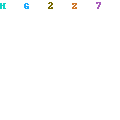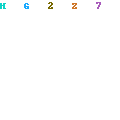A better explanation of what actually happened is in order. When you called the function from itself, it stored all of the variables and all of the internal flags it needs to complete the function in a block somewhere. The next time it called itself, it did the same thing, creating and storing another block of everything it needed to complete that function call. It continued making these blocks and storing them away until it reached the last function when it started retrieving the blocks of data, and using them to complete each function call. The blocks were stored on an internal part of the computer called the "stack". This is a part of memory carefully organized to store data just as described above. It is beyond the scope of this tutorial to describe the stack in detail, but it would be good for your programming experience to read some material describing the stack. A stack is used in nearly all modern computers for internal housekeeping chores.
In using recursion, you may desire to write a program with indirect recursion as opposed to the direct recursion described above. Indirect recursion would be when a function "A" calls the function "B", which in turn calls "A", etc. This is entirely permissible, the system will take care of putting the necessary things on the stack and retrieving them when needed again. There is no reason why you could not have three functions calling each other in a circle, or four, or five, etc. The C compiler will take care of all of the details for you.The thing you must remember about recursion is that at some point, something must go to zero, or reach some predefined point to terminate the loop. If not, you will have an infinite loop, and the stack will fill up and overflow, giving you an error and stopping the program rather abruptly.
In using recursion, you may desire to write a program with indirect recursion as opposed to the direct recursion described above. Indirect recursion would be when a function "A" calls the function "B", which in turn calls "A", etc. This is entirely permissible, the system will take care of putting the necessary things on the stack and retrieving them when needed again. There is no reason why you could not have three functions calling each other in a circle, or four, or five, etc. The C compiler will take care of all of the details for you.The thing you must remember about recursion is that at some point, something must go to zero, or reach some predefined point to terminate the loop. If not, you will have an infinite loop, and the stack will fill up and overflow, giving you an error and stopping the program rather abruptly.

